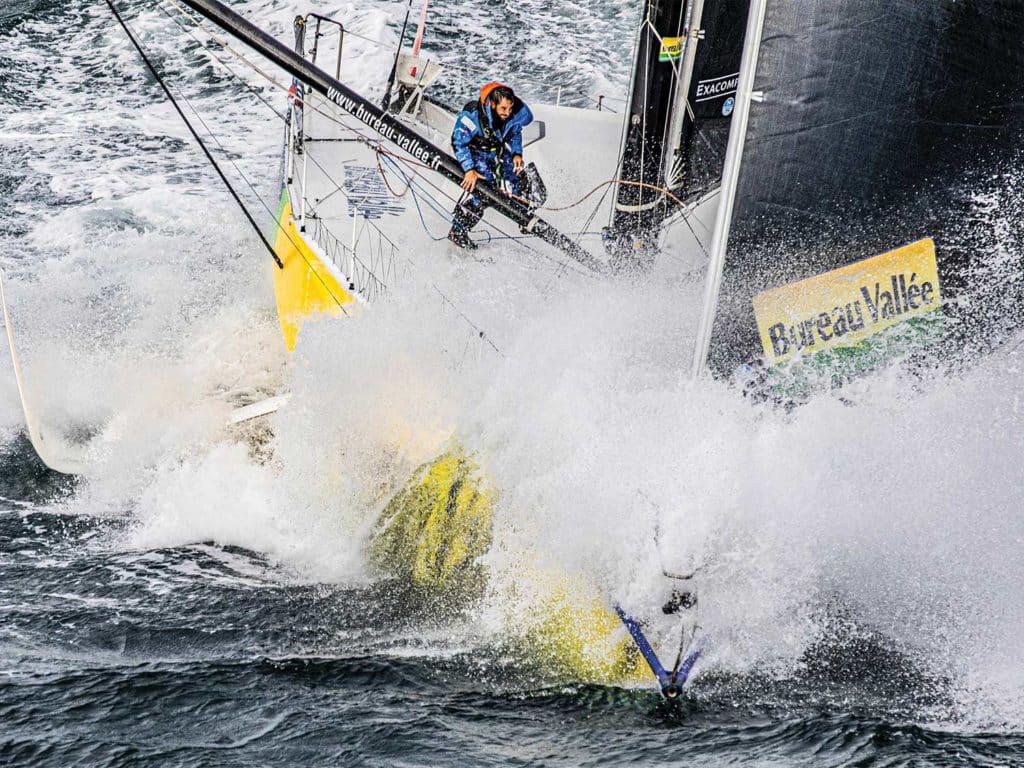
Gone is the idea of skippers disappearing over the horizon and then finishing hundreds, if not thousands, of miles apart, having surfed entirely separate weather systems in the Southern Ocean. From now on, we can expect sailors to prepare for the Vendée Globe as a sort of giant fleet race when the great capes—Good Hope, Leeuwin and Horn—function as little more than buoys on the course. This pandemic-era Vendée Globe featured not only revmarkably close racing all the way around the world, with a front grouping of 10 boats each in contention for the podium for three months, but it also set a new precedent with a finale that was easily the most dramatic in the event’s 32-year history.
Those closing stages, on a breezy and cold Bay of Biscay, saw five boats capable of winning right up until the last 24 hours of the 28,000-mile race. In the end, the first eight boats finished within 19 hours of each other after 80 days at sea. And for the first time in the history of the race, the line honors winner, Charlie Dalin on Apivia, lost on corrected time—by only two and a half hours, to Yannick Bestaven on Maître Coq IV, who was third across the line.
This was a race that was supposed to offer a showpiece for the latest foiling designs, but predictions that they would storm away from the older-generation boats with foils, and the even older ones with daggerboards, proved wide of the mark for a variety of reasons.
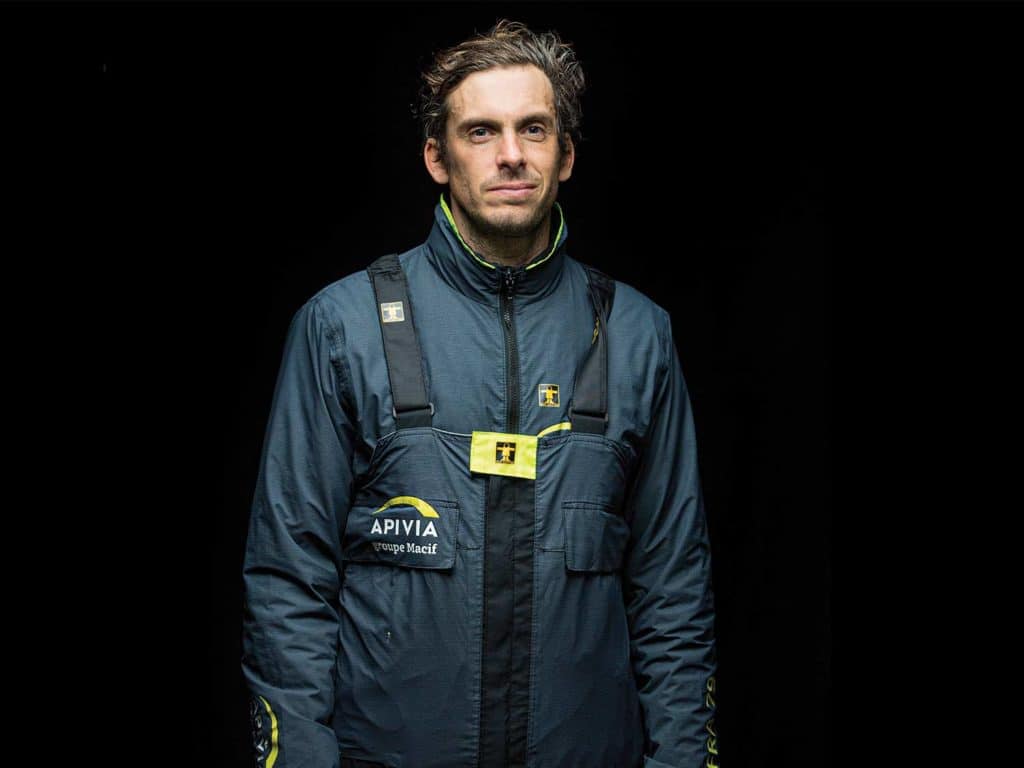
Among them was the fact that the newest boats seemed to disproportionately experience collisions with debris or structural failures. Of the seven new rocket ships aiming for glory, two dropped down the fleet after repairs or restarting, including Jérémie Beyou’s Charal and Armel Tripon’s L’Occitane en Provence. Three retired with damage: Nicolas Troussel’s Corum L’Epargne, Alex Thomson’s Hugo Boss and Seb Simon’s Arkéa-Paprec. The two that made it all the way around were both handicapped by losing the use of one foil: Thomas Ruyant’s LinkedOut and Dalin’s Apivia.
Alongside the damage and retirements, weather conditions seemed to work against the latest foilers. They struggled to show their paces because either wind angles or sea states were not ideal. When in the Southern Ocean, those skippers with lifting foils found them too dangerous to use in big seaways and strong winds. The result was the foilers from 2015 were more than just in the mix in a race, when for only the second time in Vendée Globe history, the winning skipper did not break the previous record. Bestaven took the spoils on corrected time on the 2014 vintage Maître Coq IV; Louis Burton finished third overall in a 2015 boat, Bureau Vallée II, and Boris Herrmann, the only German sailor and highest-placed non-French skipper, finished fourth after surviving a nighttime collision with a fishing trawler in the Biscay, on the 2015-built SeaExplorer-Yacht Club de Monaco.
While the earlier-generation designs were in contention, even more remarkable were the old daggerboard-configured boats, some of them ancient warhorses that had been cleverly optimized with weight taken out, ballast capacity augmented and new sail plans added. Among the best performers in this category were Jean Le Cam, fourth on corrected time in the 2006 vintage Yes We Cam!; Damien Seguin on board Groupe Apicil, which was built in 2007, who finished seventh; and Benjamin Dutreux in the 2007 vintage OMIA-Water Family, who finished ninth.
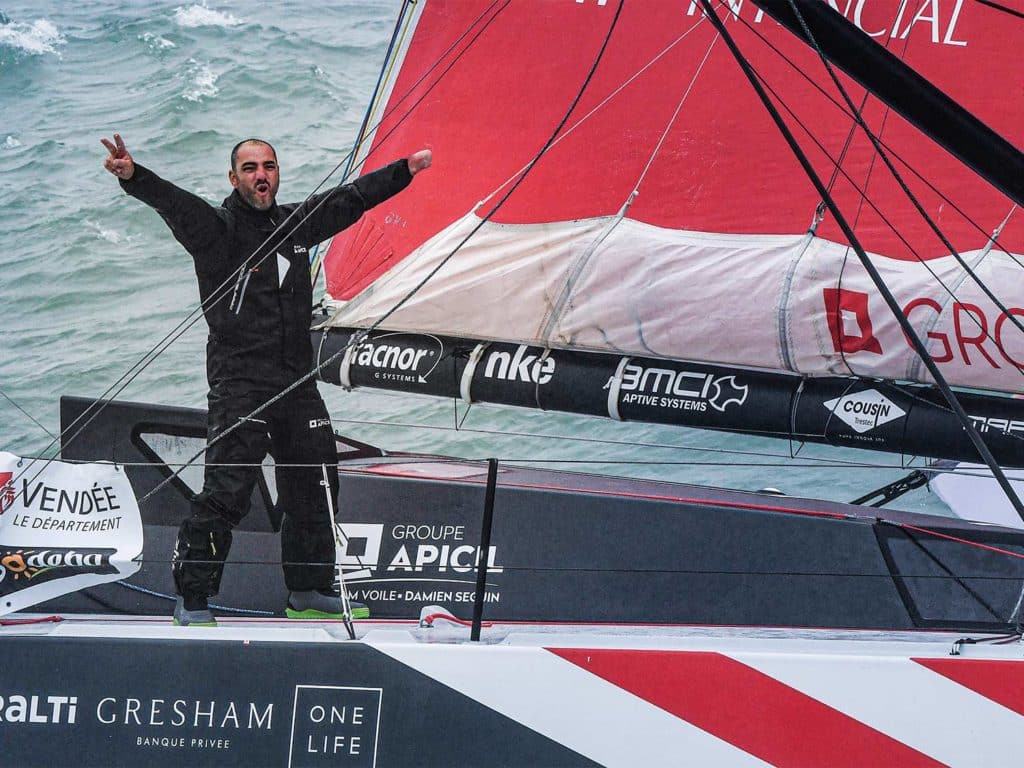
The sheer competitive intensity of the race underlines just how far the IMOCA class has come. There is now a solid calendar of short-, medium- and long-distance events leading up to the Vendée Globe, a rule that combines one-design aspects with scope for innovation and entry requirements that ensure that both boats and skippers are up to the job. By the time the first 12 boats had finished, it is to the class’s credit that only eight of the 33 starters had retired, far fewer than the norm in the Vendée Globe.
The race also indicates that the all-important autopilots on IMOCA yachts, which steer not just to wind angle but heel angle as well, are now superbly nuanced bits of durable kit that can drive the sport’s most powerful 60-foot offshore monohulls in any conditions, 24/7, far better than any human could manage.
This ninth Vendée Globe did not lack human drama either. This time it was the rescue of Kevin Escoffier after his much-strengthened PRB broke up and sank in the South Atlantic. The popular Volvo Ocean Race winner had just minutes to deploy his life raft, having sent this text to his shore team: “I need assistance. I’m sinking. I’m not joking.”
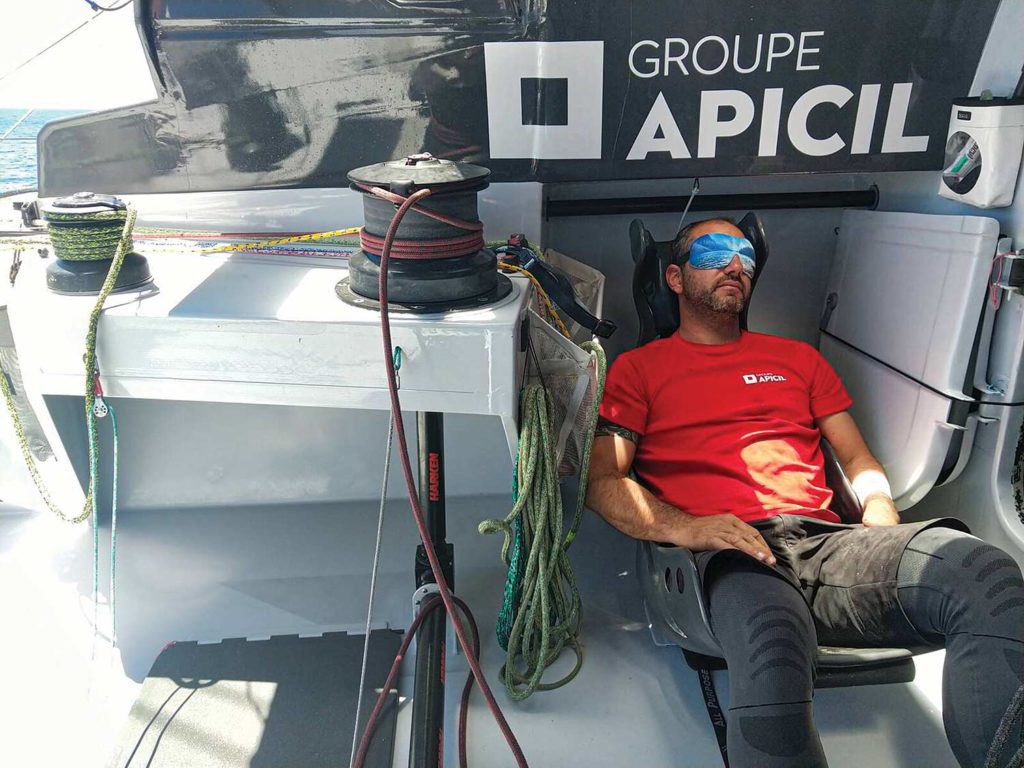
After three skippers were diverted to search for him, it was none other than “King Jean” Le Cam himself who succeeded in finding him and safely getting him aboard, before dropping him off five days later after liaising with a French naval vessel. The incident made worldwide headlines and introduced a note of uncertainty about the final podium, which only increased the tension as the race reached its climax.
But whom to pick out in a race where—to coin a phrase—everyone was a winner for just getting round the world, alone, and in one piece. Should it be Dalin, who sailed a mature and controlled race, much of it from the front to take line honors? Or the hard-driving, ebullient and unfancied Bestaven, who led throughout the Southern Pacific, then dropped back while climbing the Atlantic, but never gave up and swooped in to take the glory at the end? Or perhaps Le Cam, the senior sailor in the fleet at 61, a living legend and gnarly old French sailor who happily refers to himself in public as an “asshole” and who appeared in his onboard videos looking like Keith Richards of the Rolling Stones?
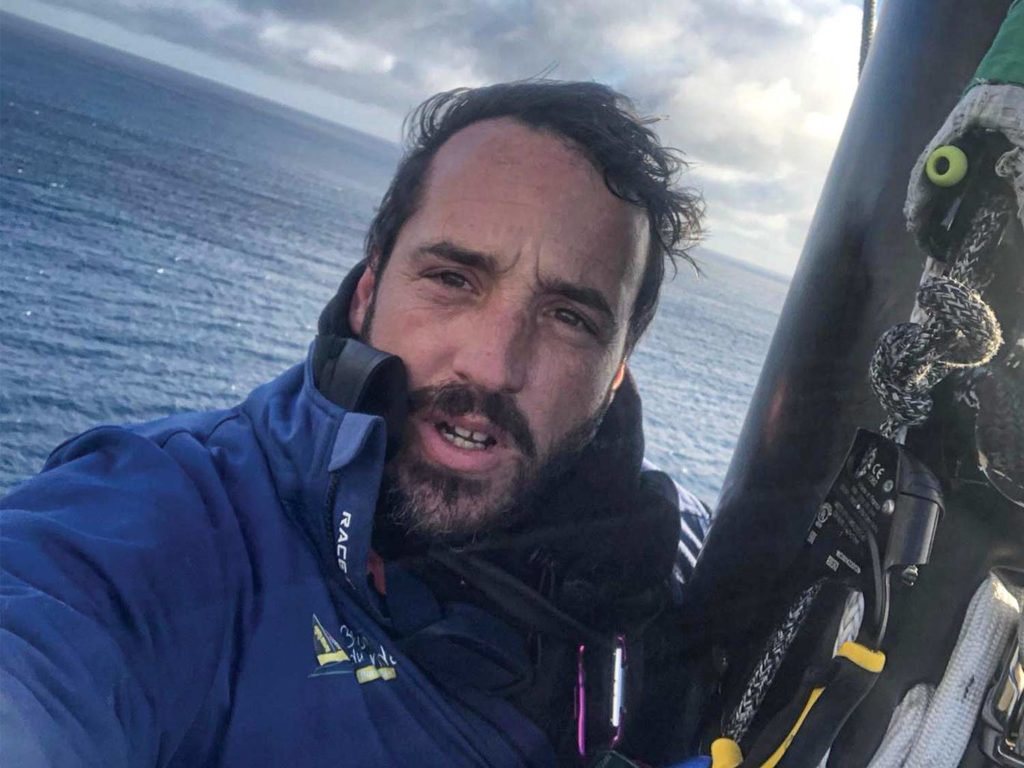
It could be any of them. But my choice for MVP in this epic is the only competitor in the fleet who you might call a genuine singlehander. Damien Seguin was born without a left hand, yet he managed not only to take part against the best solo racers in the world, in a very old and poorly rated boat, but also race right up there in contention almost all the way around the world.
With a modest budget from French insurance company Groupe Apicil, Seguin sailed around the planet 19 days quicker than his boat’s time in the previous race in 2016 and, most impressive of all, he was the first nonfoiling skipper to finish on the water, in sixth place. He dropped one place once Le Cam’s 16-hour-and-15-minute time compensation for rescuing Escoffier had been factored in.
A 41-year-old married father of two kids with a wife, Tifenn, who backs him all the way, Seguin was one of the plucky early nonfoiling leaders alongside Le Cam as the boats split at Cape Finisterre. He was inside the top 12 all the way down the Atlantic, but it was in the Southern Ocean that he started to impose himself and establish Groupe Apicil as a regular top-five contender. He was fourth crossing the latitude of the Cape of Good Hope, fifth at Cape Leeuwin and then fourth at Cape Horn.
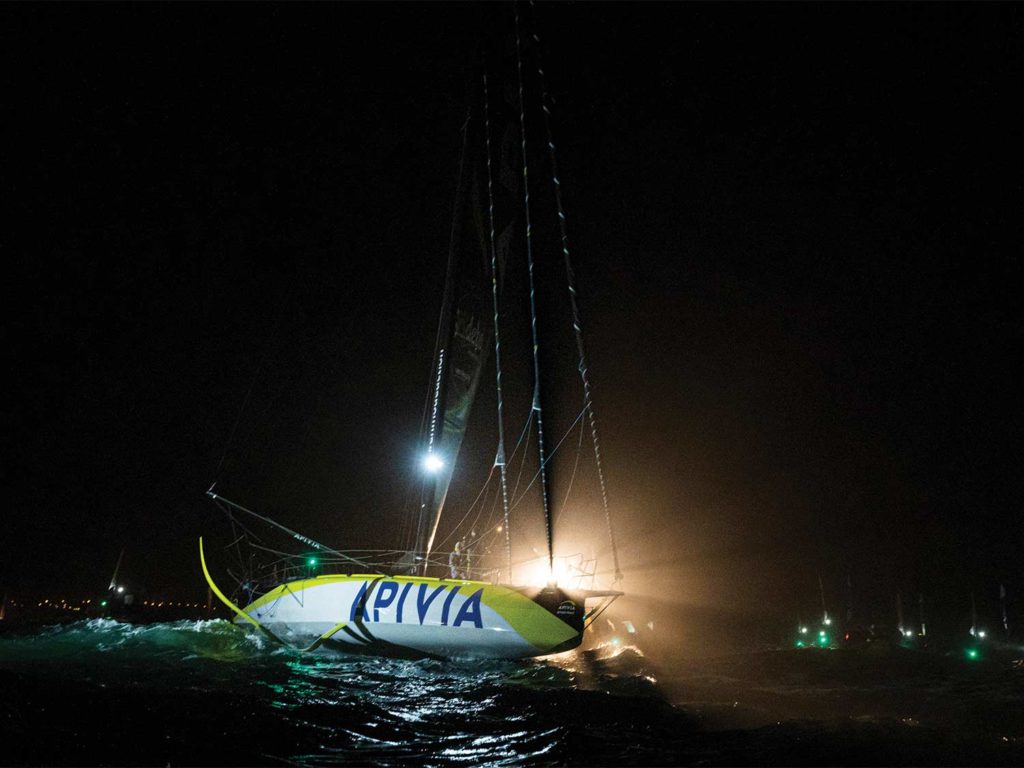
A big man with a big heart who sometimes struggles to pace himself, Seguin brings an intensity to his sailing that marks him out even in this Vendée Globe. It was born out of his early experiences in the Paralympics, where he won two gold medals, and he has the Olympic rings tattooed on his arm to remind him of it. What is fascinating about him is that he manages to execute the myriad tasks of a solo racer on a powerful monohull, even though there are only two pieces of specially adapted kit on his boat to compensate for his lack of a hand. One is a device that he designed to help him empty a packet of freeze-dried food; the other is the cockpit pedestal grinder that has a socket into which he can place his left forearm when spinning the winch. In all other respects, Seguin has adapted himself to his boat and to the requirements of an elite solo racer.
Anyone who has sailed inshore or offshore, solo or as part of a crew, knows how often two hands aren’t enough and the importance of the old adage “one hand for you, one hand for the boat.” The enduring mystery in my mind is how Seguin manages. His great friend and sailing partner Yoanne Richomme says it is important to understand that Seguin has a wrist on his left arm, and that gives him some articulation. When you sail with him, Richomme says, you barely notice that he is missing any facility. “He can tail a halyard, as if hand-over-hand,” Richomme says. “He does a half-turn around his wrist and, when you are with him, you can barely see it when he is doing it. That is a good example of how smart he is with what he’s got. It is hard to see a difference compared to a sailor with two hands.”
All finishes of a Vendée Globe nonstop unassisted circumnavigation are emotional occasions, but none more so than that of Seguin, who achieved a final ranking that few foresaw. He had also demonstrated that people with disabilities can compete with the able-bodied on the same playing field without any special compensations, an example that underpins his work with his own charity, Hands & Feet, which helps young people with disabilities.
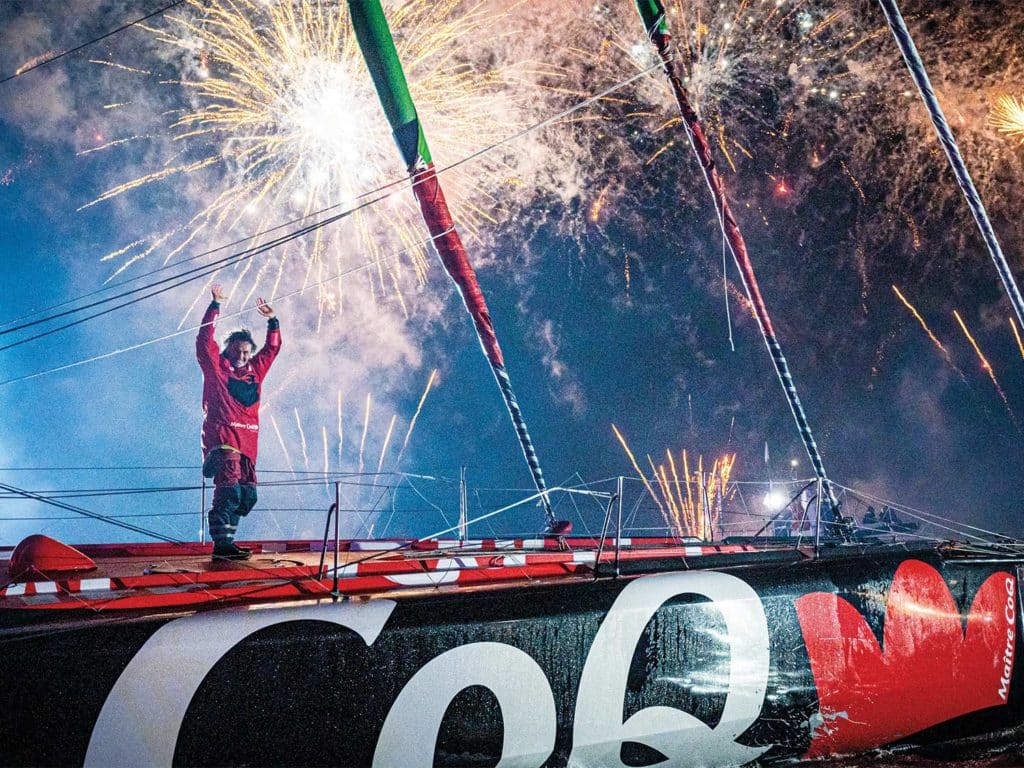
Standing on the foredeck of his boat, dressed like Captain Hook in a red tunic with a stuffed parrot on his shoulder and his left arm bearing a pantomime hook, a beaming Seguin breathed it all in as French race fans lining the canal into the harbor at Les Sables d’Olonne applauded his outstanding voyage.
“There is nothing simple, nothing given in the Vendée Globe. You really have to push yourself in all areas,” he said after he stepped ashore. “You have to earn it. Every step you take, every day you take is a small victory. In the end, it’s a great reward for everyone.”
Look out for him next time because Seguin is not finished with the Vendée Globe. He is already planning his second tilt at the world’s toughest yacht race and wants a newer foiler to enable him to compete for the top prize.
If Seguin takes my MVP nomination, a close second is Seguin’s fellow Frenchman Louis Burton, another relentlessly determined individual who pushed himself and his boat from one position schedule to the next, with an intensity few others in the fleet could match.
Burton was sailing the yacht that won the previous race under the colors of Banque Populaire, in the hands of Armel Le Cléac’h. With relatively little upgrading work since that race, the boat still proved a potent weapon, with sponsorship from French office-supplies company Bureau Vallée. A laid-back character ashore, Burton was not particularly rated going into the race, his third Vendée Globe, after finishing seventh last time. But he should have been.
Once the fleet got into the Southern Ocean, the sailor based in the English Channel port of St. Malo put his foot down and dropped right onto the border of the ice exclusion zone. Throughout the big south, he was often the southernmost of the leading boats. But his race seemed to be over as a contender for the podium when autopilot trouble culminated in him blowing off the top section of his mast track in an uncontrolled jibe. He also had a major issue with a jammed halyard lock.
Burton tried to climb his mast while underway south of Australia, but he got bashed around and realized he needed shelter. He sailed into the lee of the lonely east coast of Macquarie Island, 800 miles southeast of Tasmania, and set up the boat under a J3 staysail, sailing on a north-south axis under his misbehaving autopilot. Burton climbed the mast several times to execute a complex repair but emerged triumphant, even though his race was effectively over, with the leader nearly 940 miles ahead of him.
But the 35-year-old, who is married to French round-the-world sailor Servane Escoffier, did not know he was beaten and set about catching up, once again hugging the southerly limit of the course. By Cape Horn he was sixth, and going north up the Brazilian coast, he was again vying for the lead in a boat that was back in almost mint condition. “I can’t quite get over my whole journey,” he said at that stage. “When I look at what I’ve been through since I left Macquarie Island, I feel like it is surreal. I had not thought I would get back to the group I’m in. I am extremely happy—it feels like I am in a daydream.”
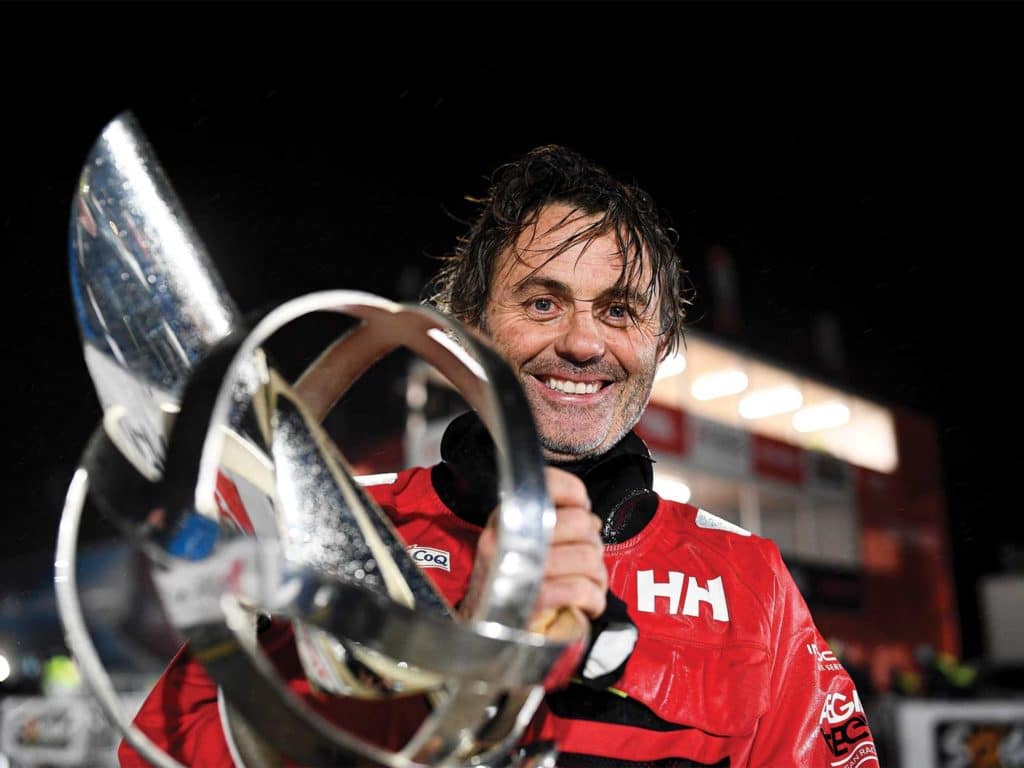
Burton continued pushing hard to the finish, taking a northerly option into the Bay of Biscay that could have brought him overall victory. In the end, he arrived in second place—just four hours after Dalin—and was corrected to third, an astonishing achievement given what he had had to contend with.
At Les Sables d’Olonne, there was some nervousness in the air about how it might look if a sailor raced around the world, then crossed the finish line first but was not adjudged the winner, a routine occurrence in handicap racing but unprecedented in the Vendée Globe. The sailors themselves diffused that issue.
Dalin made it clear that he was happy to have taken line honors as he waited for Bestaven to come steaming in to take the win. Then, when the Maître Coq IV skipper reached the finish, he chose the perfect formula to sum up what so many others were feeling. “There are two winners of this Vendée Globe,” he said, capturing the spirit of a race between sailors whose respect for one another is one of its hallmarks.









